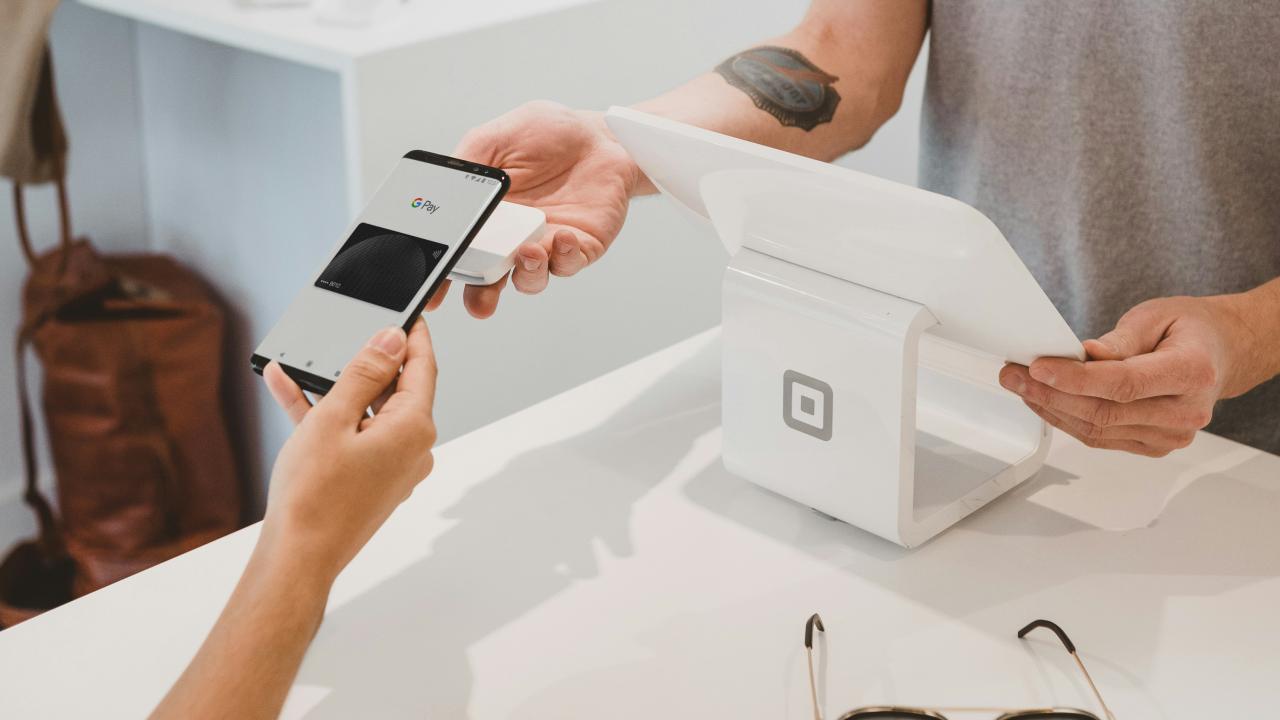
Exponential digital wallets growth in the region aims to continue transforming not only the payment experience, but also access to more financial and non-financial products, and even in-person sales. In a region where cash remains king for now, the challenge is to deepen recurrence and achieve full interoperability.
Born in the quarries of Bancolombia in 2016, the Nequi mobile application is today the digital wallet with the largest number of users in Colombia. At the end of 2023, the platform –currently operating as a neobank independent from Bancolombia– reported more than 18 million users, of which more than 13 million make at least one transaction per month.
Following closely behind is Daviplata, the wallet of bank Davivienda, which at the end of 2023 had more than 17.4 million clients with balances close to COP 993,000 million (more than US$ 254 million) in deposits and COP 118,600 million (about US$ 45.7 million) revenue. Similarly, Yape, the digital wallet of the Peruvian financial holding company Credicorp, currently has more than 15 million users in its country of origin and an additional 1.5 million in Bolivia, a market to which it expanded in August 2023.
Millions more, millions less, the truth is that these figures reflect an unquestionable fact: that digital wallets have become part of the daily lives of Latin Americans. And this trend is transforming, in turn, the entire payment industry in the region. Proof of this is that the 'Global Payments 2023' report, carried out by Boston Consulting Group (BCG), estimates that by 2027 the payments industry in the region will grow at a rate of 8.3% and will reach US$ 179 billion income. Figures much higher than those recorded between 2017 and 2023, when income in the sector grew at a compound annual rate of just 2%, to US$ 120 billion.
Today, in the region, the payment method that is growing the most in use is mobile wallets. For example, according to the 2023 Financial Inclusion Index, prepared by Credicorp and Ipsos, the use of this payment method is the only one that grows in the eight countries covered by the study, going from 7% in 2021 to 14% in 2023. And the percentage of frequent users of digital wallets is one of the indicators that grew the most in the three editions of the study, going from 21% in 2021 to 59% in 2023.
“New payment methods, such as mobile wallets, have become tools that facilitate payments and transfers. As there are more mobile phones than there are people in Latin America, it is clear that consumers will continue to use them to make their payments, whether online or at the point of sale. In 2024, you will see an eruption of different types of devices that accept payments and each connected device will end up being considered a commerce device,” predicts Walter Pimenta, Executive Vice President of Products and Engineering for Latin America and the Caribbean at Mastercard .
SUPPLY BOOM
Mexico, one of the large fintech markets in Latin America, is one of those that stands out in the use of mobile wallets in the region. According to a study by business software platform, Capterra, this country even has the highest adoption of digital wallets in the world, with 70%, while 91% of Mexicans use digital wallets to make payments.
“The use of digital payment methods has been increasing, which also leads to the use of these e-wallets. Despite this, cash is till the main form of payment for 89% of the population,” says Francisco Orozco, leader in the Monterrey Region of the FAIR Center for Financial Access, Inclusion and Research of the TEC Business School. And that continues to be the main enemy to overcome for wallets throughout the region.
Of the 650 fintech companies that exist in Mexico, 30% are focused on payments and remittances, according to the most recent Fintech Radar, made by Finnovista. In this broad universe, players such as Hey Banco --the digital spin off of Banorte, born as an app to make interbank transfers and pay for services- stand out. Like Bancolombia's Nequi, it is currently going through a process of spinning off its parent bank to become an independent neobank.
Hey Banco coexists with global players, such as Apple Pay and Google Wallet, and regional players, such as Mercado Pago, Nubank and Ualá. But it is also gaining special relevance with a local player in the Mexican market: Spin by Oxxo, the digital wallet of the Femsa convenience store network, which at the end of 2023 had 9.9 million users.
The Coca-Cola bottler's bet in Mexico is big. A year ago, Ricardo Olmos, director of Spin by Oxxo, said that what they seek is to play a key role in the financial ecosystem and promote access to it for millions of people in the country. “In a country where cash is still king, Spin has a big advantage over other players, as Oxxo has 20,000 branches and each one basically becomes a bank. This guarantees the ease that people who have not yet entered the digital world can go to the store and make deposits or collect remittances. Oxxo understood this game and is betting on this market,” says Orozco. A report from payment processing company Worldpay predicts that wallets would reach a 24% share of face-to-face sales volumes in Latin America by 2026, with an increase of nine points compared to 2022.
Towards the south, in Chile, the use of mobile wallets also registered record growth. Transbank, the main operator in that country, reported an unprecedented milestone was reached in 2023: an increase of more than 1,000% year-on-year in the use of digital wallets to make in-person payments in businesses participating in its network. This explosive growth was attributed to the entry of the Apple wallet into Chile last August.
One month after its launch, Transbank reported that transactions through this channel increased 530%, considering the use of phones and smartwatches. “Chile stands out for its leadership in the adoption of technology in digital payment in Latin America. This has been going on for several years, with electronic transfers, and has maintained this position in financial inclusion and, in general, in access to means of payment,” says Juan Antonio Figueroa, executive director of ChilePay, a corporation that seeks the digitalization of cash.
Figueroa also highlights some rearrangements in the offer of mobile wallets, such as the departure of Fpay, the Falabella wallet, and the integration of Chek, from Ripley, to Banco Ripley, abandoning its independent management.
MORE SERVICES AND INTEROPERABILITY
After the explosion of use described, wallets now face the challenge of increasing recurrence and, above all, transactionality in different types of services they offer to the user. Yape, for example, has expanded its horizons beyond the world of payments to offer credit and marketplace services, like its Colombian peers Nequi and Daviplata.
“We have a financial offer with a wide range of credits, among which nanocredit and salary advances stand out. Our clients can create savings pockets, which allow them to save frequently, fulfill their goals and insure what they want most, with our insurance offer. In added values, Daviplata has its own marketplace, identified in the app as a Virtual Store. This has categories such as technology, clothing, accessories, health, beauty, among others,” details Margarita Henao, CEO of Daviplata, to AméricaEconomía .
Another pending task with uneven progress among the countries of the region is that of interoperability. This is because, after creating the habit, users now increasingly and urgently need the different wallets in their markets to be able to 'talk to each other' in pursuit of a better customer experience. “Many wallets have appeared, but the challenge that organizations like ChilePay seek to promote is interoperability for the experience and also for businesses. Hopefully, the different payment methods reach interoperability schemes that facilitate their businesses,” Figueroa emphasizes.
Some markets show more progress than others. In Peru, for example, phase 2 of interoperability between financial entities dictated by the Central Reserve Bank of Peru began last September. The milestone meant the green light for the start of transactions between Yape and Plin, the wallets with the largest number of users in the market. The effect was immediate: less than a year later, it is estimated that more than two million interoperable payments are made per day at present.
According to Henao, Daviplata is already interoperable in Colombia through QR technology, which allow payments to be made and received from any bank in the country. “What wallets should take into account is strengthening customer service and ensuring that the user experience is proactive and secure, as well as the availability and stability of the platform. In value offering, many competitors offer similar services. The client's preference will be given to how we prevent them from having a new [incident]. And, if you have it, how we ensure that your experience and attention is as fast as possible,” says the CEO of Daviplata.
In that sense, Colombia seeks to replicate the successful experience of the Brazilian Pix, the mandatory digital instant payment system for all financial entities, promoted by the Central Bank of Brazil. This allows you to transfer money and make payments with just a code. The largest wallets in Colombia, Nequi and Daviplata, have stated that they will comply with the necessary rules to launch this initiative, run by the central bank. The success of Pix has been so overwhelming that the United States and Canada are other countries working to replicate the model.
“The challenge of digital wallets is to deliver a better product and offer a better experience. This also implies having a financial education approach about the products they offer because they do not come with instructions on how to use it. The great task that these new digital players have is to contribute to the culture and financial education of the countries,” warns Orozco.










